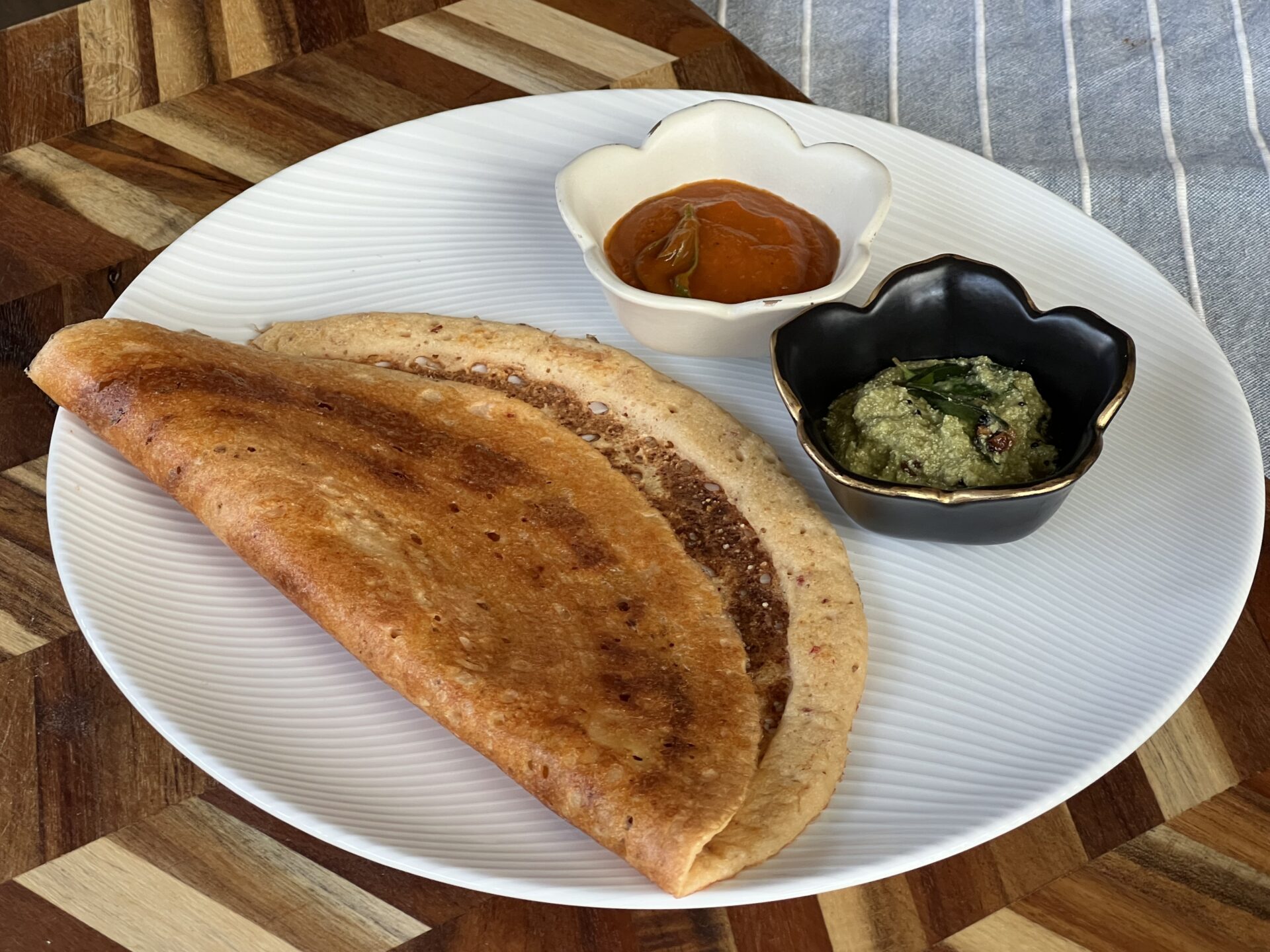This is a lentil rich crepe made with four types lentils and rice. Adai also includes spices like red chillies and methi seeds and has bold flavors that don’t need a lot of complicated side dishes. Adai is usually made a little thicker than a dosa, and resembles a thin pancake. However, if you prefer them to be crispy, they taste just as good crispy too.
Adai
Ingredients
- 1/2 cup Chana dal
- 1/2 cup Tuar dal
- 1/2 cup Mung dal yellow or green
- 1/2 cup Urad dal
- 2 cups Rice
- 8=10 Dried red chillies
- 1 tsp Methi seeds
- 1 tsp Salt to taste
Equipment
- High powered blender – such as a Vitamix
- Non stick tava or griddle
- Flat spatula
Instructions
- Transfer the dals, rice, chillies, and methi seeds to a bowl and cover with water. Set aside for a minimum of 5 hours. .
- Once the dals are fully soaked, drain the water and set aside. Reserve the soaking liquid.
- Transfer the soaked dal and rice mix to a high powered blender and make a smooth paste using a little bit of the leftover water as needed. It is better to add a little water at a time, since there is no easy way to fix a batter that is too thin.
- Empty the contents of the blender to another large bowl or other container such as a dutch oven.
- Add salt to the batter and mix well. Dilute the batter with water until you have a pourable batter. Cover and ferment the batter for up to 24 hours in a warm place.
- Once the batter has fermented and has increased in volume, stir it back down and transfer to an airtight container and refrigerate until ready to make the adai.
- The batter can be stored in the refrigerator for up to a week, but it is best used within 2-3 days.
To make Adai
- Heat a large flat non-stick tava (or skillet) on medium-low heat until a couple drops of water sprinkled onto the tava sizzles and evaporates instantly.
- Using a soup ladle or similar spoon with a cup like bottom, pour 1 to 1 1/2 ladles of batter onto the skillet and spread immediately with the bottom of the ladle into a crepe using a spiral motion. Be careful not to apply too much pressure, but you will need to work quickly as the batter will begin to cook as soon as it hits the hot surface. Adai is traditionally served as a soft pancake rather than a thin crepe. But if you prefer them thin and crispy, you can spread them thin.
- Spoon a half teaspoon of oil all over the adai and allow to cook for about 2 minutes or until the edges begin to brown.
- Using a flat spatula, lift and flip the adai. You can add a few more drops of oil to get a crisper texture and cook for another minute.
- Flip the adai again and fold in half using the spatula. Transfer to a plate and serve immediately with a pat of butter (optional), coconut chutney, tomato chutney, or just some brown sugar. Since adai is a lentil rich dish by itself, it is not served with a lentil heavy side like sambar.
Notes
- Making adai requires practice and patience, and a good non-stick tava.
- If your adai doesn’t spread, but seems to lift up as you spread, then your tava is too hot. Lower the heat for the next adai by sprinkling a few drops of water on to the tava with your fingers and turning the heat down a bit.
- While restaurants like to serve adai with sambar and multiple chutneys always, it is not always eaten this way in south India. Skip making the sambar altogether and just serve with a coconut chutney, tomato chutney, chutney powder, or a spoonful of brown sugar.
- Adai must be served hot and cannot be made ahead of time and reheated. So if you are making these for a crowd, consider using more than one tava at a time.
- If you are using store bought Adai batter, you may skip straight to the section on making adai.
- If your homemade batter does not show any signs of fermenting in the first 8 hours, try storing the container in an oven with the oven light turned on for a few hours. Alternately, you can mix a tiny pinch of instant yeast, or a half teaspoon of sourdough starter to the batter to kickstart fermenting.

